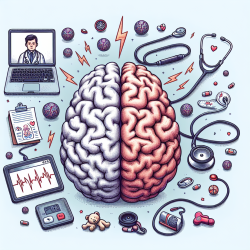Functional Near-Infrared Spectroscopy (fNIRS) is a fascinating tool that helps us peek into the brain's activity by measuring changes in blood flow. While it’s a game-changer for neuroscience, it's not without its challenges. The research paper "Interdisciplinary views of fNIRS: Current advancements, equity challenges, and an agenda for future needs of a diverse fNIRS research community" sheds light on these issues and provides actionable insights for practitioners like us.
Key Takeaways for Practitioners
1. Understanding fNIRS Basics
fNIRS is a non-invasive way to monitor brain activity. It’s portable and more tolerant of movement compared to other neuroimaging techniques like fMRI. This makes it especially useful for real-world applications, such as in educational settings.
2. Bias and Diversity in Research
One of the main concerns highlighted is the presence of bias in fNIRS research. This can stem from the technology itself, which sometimes struggles to collect data from individuals with darker skin or hair. Moreover, societal biases can also infiltrate research, leading to unrepresentative data.
3. Practical Applications in Education
For educators and therapists, fNIRS can be used to study how students engage with learning materials and each other. This can provide insights into collaborative problem-solving and mental state detection, helping tailor educational strategies to individual needs.
4. Future Directions
The research emphasizes the need for better hardware and software to minimize bias and improve data quality. For practitioners, staying updated with these advancements can enhance the effectiveness of your interventions.
Implementing Research Insights
Addressing Bias
- Diverse Sampling: Make a conscious effort to include diverse populations in your research and practice.
- Technology Adaptation: Use tools and methods that account for differences in skin and hair types to ensure accurate data collection.
Educational Tools
- Interactive Learning: Utilize fNIRS data to create more engaging and effective learning experiences.
- Feedback Mechanisms: Implement real-time feedback systems based on fNIRS data to adapt teaching methods dynamically.
Encouraging Further Research
- Collaborative Efforts: Work with interdisciplinary teams to explore new applications of fNIRS in educational settings.
- Stay Informed: Keep abreast of the latest research and technological advancements to continually improve your practice.
To read the original research paper, please follow this link: Interdisciplinary views of fNIRS: Current advancements, equity challenges, and an agenda for future needs of a diverse fNIRS research community.










